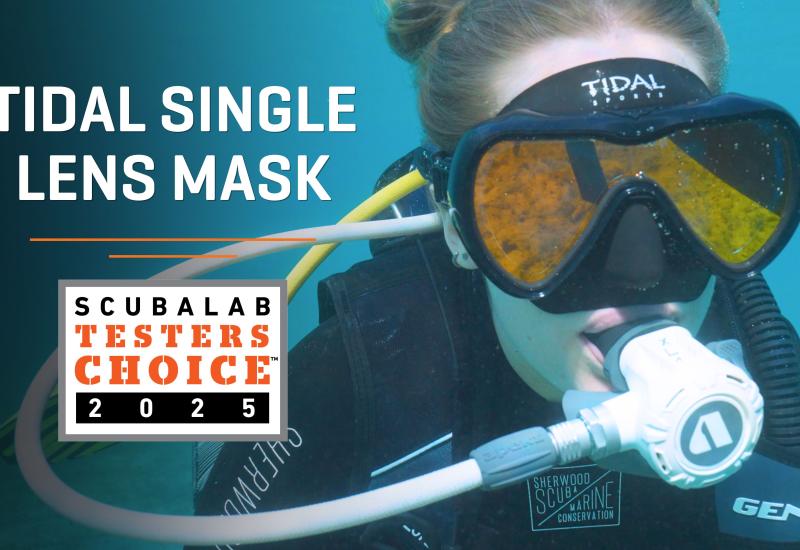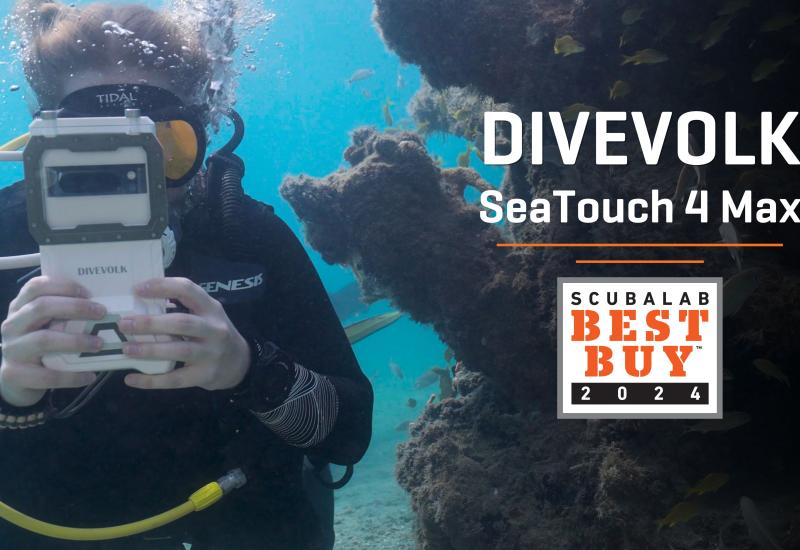A Diver's Guide to Buying Scuba Gear

Courtesy PADIHaving the right gear for your body and dive style is key to underwater comfort.
What to Look for in a BCD
ScubaLab: The Best Scuba BCDs of 2021 Reviewed
1. Exhaust Valves
These vent air from the BC bladder. The main exhaust/overpressure relief valve is activated by pulling on the corrugated hose. Remote exhaust valves usually work with pull cords. The more exhaust valves a BC has, the more options you have for venting air while in various positions. Be sure you can access relief valve pull cords easily and quickly.
2. Integrated Weight System
Integrated weights are available on virtually all BCs, with the exception of some rental and bare-bones travel models. These systems eliminate the need for a weight belt by loading ballast into specially designed pouches that can be ditched in an emergency by pulling on easy-access quick-release handles. Before diving any new BC, familiarize yourself with the operation of its integrated weight system.
3. Trim pockets
Typically located on the back of the shoulder or on the tank band, trim pockets hold a small amount of non-dumpable weight to help divers establish proper position attitude in the water.
4. Bladder
By holding air, the bladder allows for buoyancy control at depth. In a jacket-style BC, bladders are positioned under the arm, on the waist and at the and at the back. By wrapping around the diver, the bladder provides a stable swim position and surface floating position that is less dependent on trim weights. Back-inflation BCs position the bladder behind the diver to eliminate squeeze. Positioning of ballast and trim weight is important for maintaining stability. Hybrid BCs usually feature a rear air bladder balanced by some additional buoyancy around the waist. Hybrids tend to be stable at depth and comfortable on the surface, but offer more bulk at the waist.
5. Power Inflator
This connects to the end of the corrugated hose and ties into the tank's air supply via a low-pressure hose. Inflate and deflate buttons fill or vent air from the bladder. Ensure that the mouthpiece is comfortable—you'd need to manually inflate the BC bladder in an emergency.
6. Stowage
BC pockets are usually fitted with zipper or Velcro closures. Jacket-style BCs often have at least two pockets; back-inflation BCs often have expandable or folddown pockets. Metal and plastic D-rings provide another option for attaching accessories to your BC while maintaining a streamlined profile.
What to Look for in a Dive Watch
ScubaLab: The Best Dive Computers of 2021
Finding the right dive watch is about finding one with a focus that matches your own needs, whether that’s function, style or practicality. Here are some things to consider.
1. Size
First consider lug-to-lug dimension—the distance between strap or bracelet attachments from top to bottom. The distance should be a little less than the width across the flat of your wrist so that the watch doesn’t overhang. For wrists up to 7 inches around, a case diameter up to about 46 mm often looks best.
2. Price
You can spend a lot on a dive watch, but it’s also possible to buy a finely crafted timepiece for less than the price of a smartphone—without worrying about it becoming obsolete with the next software update.
3. Movement
Automatic (self-winding) and solar-powered watches are popular because they are accurate, robust and convenient. Automatics can be manually wound as well.
4. Style
Do you want a 200-meter diver that also looks great peeking out of the cuff of your suit, or something that only a diver would wear? The choice is yours.
What to Look for in A Wetsuit
ScubaLab:
13 New 3mm Scuba Diving Wetsuits Tested By ScubaLab
The Best 5 mm Scuba Wetsuits Reviewed by ScubaLab
Best Cold Water Wetsuits for Staying Warm (5 and 7 mm)
The Best Drysuits for Scuba Diving Reviewed by ScubaLab
1. Materials
Modern high-stretch neoprene increases comfort and flexibility. More traditional neoprene is stiffer, but resists compression better. Many suits use both types: compression-resistant neoprene for its thermal advantages, and anatomically shaped high-stretch panels for flexibility.
2. Seams
Glued and blind-stitched seams eliminate water seepage because the needle never goes completely through the neoprene, making it a good choice for coldwater suits. Flatseam stitching is softer on the skin, but allows for water seepage, making it better for warmwater suits.
3. Seals
Seals at the neck, wrist and ankles keep water from entering the suit. Rolled smooth-skin seals do the best job; standard smooth-skin seals are also effective, followed by O-ring seals. Nylon cuffs— used in place of seals—are comfortable but don’t block water entry.
4. Zippers
A high-quality zipper backed by a smooth-skin sealing system creates a water-blocking barrier that can't be beat. Some suits use zippers with overlapping teeth, which are designed to reduce water seepage even further.
5. Body Armor
Many suits use flexible kneepads, which provide substantial coverage for the knee and leg area but don’t hinder swimming. Anti-abrasion patches on the shoulder and rear add additional durability.

Scuba Diving magazine staffEveryone has an individual comfort level, but these are the common ranges divers fall into from shorty to drysuit.
What to Look for in Scuba Fins
ScubaLab: The Best Scuba Fins of 2021 Reviewed
1. Blade Design
Long, stiff blades look cool, but require more kicking effort and can put stress on weak muscles. Flexible fins are easier to kick and often produce more propulsion for the amount of effort expended.
2. Foot Pocket
Full-foot pockets are worn barefoot. They are thin, flexible and very comfortable, but proper fit is critical. These types of fins are well-suited to warm-water locales. Open-heel fins are worn with dive boots. They are more forgiving because they can be adjusted with a heel strap, which also allows you to adjust the fin for the different dive boots you might wear. Be sure to wear boots when trying on open-heel fins.
3. Materials
Fins made from thermoplastic elastomers tend to be lightweight and rather stiff. All-rubber fins tend to be flexible and heavy. Many fins are made with a combination of the two, using plastics for stiffness, and rubber both for flex and to enhance foot-pocket comfort.
4. Buckle and Strap System
Easy-adjust buckles with rubber straps are standard. However, these days, both manufacturers and divers are replacing them with stainless spring straps or bungee straps that eliminate the need to adjust and readjust straps. They also make quick work of donning and doffing.

Courtesy PADIEverything — from your snorkel to your fins — is an essential part of your kit.
What to Look for in a Snorkel
ScubaLab: Scuba Diving Snorkels Buyers Guide
1. Comfort
Make sure that the snorkel is comfortable in your mouth, and that there are no irritating edges. Attach the snorkel to your mask and put it back in your mouth to ensure that it doesn’t pull the mask uncomfortably.
2. Snorkel Keeper
Look for a durable and easy-to-use attachment. Many keepers can swivel, slide and rotate for easy adjustment and increased comfort. Keepers with a quick-disconnect are convenient for quickly removing and attaching the snorkel for travel and storage.
3. Purge or Water-Restricting Valves
Semidry and dry snorkels reduce or eliminate surface water intrusion, and purge valves aid in water removal. These conveniences can be very helpful, but can also increase breathing effort.
4. Flexible Lower Tube
Flexible tubing provides a greater range of motion for the mouthpiece and improved comfort when the snorkel is in place. When not in use, it lets the mouthpiece hang back and out of the way.
5. Snorkel Upper Tube
The bigger the tube, the easier it is to breathe, but the more drag it creates. A large-diameter tube becomes even more important if the snorkel is fitted with water-restricting or purge valves.
6. Foldable Design
Folding designs allow divers to stow the snorkel until it is needed, eliminating drag and entanglement potential.
Things to Consider For…
Dive Lights
Your primary light should sit comfortably and securely in your hand. Backup lights should stow easily until needed. In an emergency, dive lights with SOS and strobe functions preserve battery life while signaling for help.
Dive Knives
The grip of your knife should offer comfort and control, and mounting options should be secure but easy to access. Knives that come apart for cleaning are easier to protect from corrosion.
Dive Bag
Dive-specific luggage should be able to withstand sun, salt water and, of course, airport baggage handlers. Some bags have waterproof dry pockets, drain holes, internal padded regulator bags and other features specifically designed to protect dive gear.










